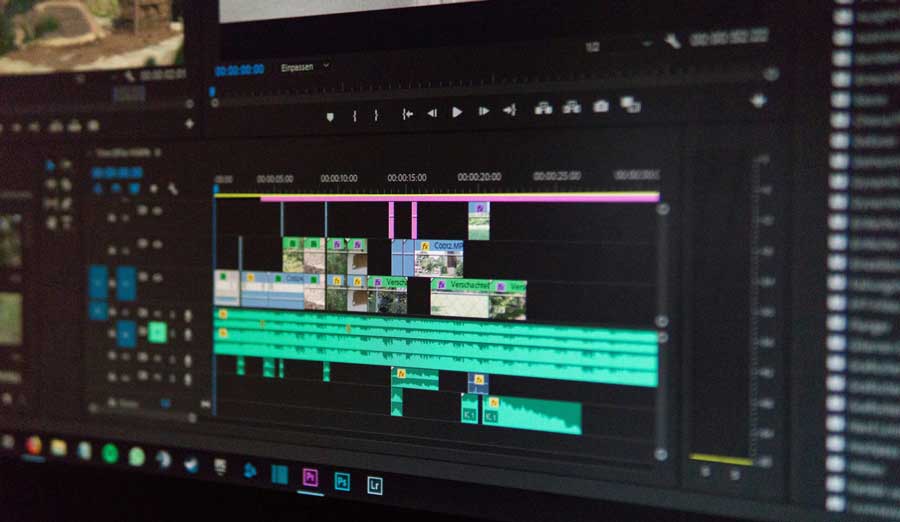In the ever-evolving world of digital experiences, motion graphics have emerged as the choreographers, adding rhythm and vitality to the static canvas of web and app design. Beyond mere aesthetics, motion graphics play a pivotal role in capturing attention, conveying information, and enhancing user engagement. Let’s explore the dynamic landscape of motion graphics and their strategic usage in web and app design, as well as their impact on digital marketing.
Defining Motion Graphics
Motion graphics are graphic elements that incorporate movement to convey a message or tell a story. They encompass a wide range of visual techniques, including animation, transitions, and dynamic elements that bring still images to life. In the realm of web and app design, as well as digital marketing, motion graphics elevate the user experience by providing a visually engaging and interactive interface.
Enhancing User Experience in Web and App Design
- Visual Engagement: Motion graphics are attention magnets. They draw users into the interface, guiding their attention to key elements, messages, or calls-to-action. Whether it’s a subtle hover effect or a dynamic loading animation, motion graphics make the browsing experience visually compelling.
- Storytelling Through Animation: Motion graphics allow designers to tell a story in a dynamic and captivating way. From animated infographics that simplify complex information to scroll-triggered animations that unfold a narrative, motion graphics breathe life into the storytelling aspect of web and app design.
- User Guidance: Motion graphics serve as silent guides, leading users through the user interface. Animated cues, transitions, and feedback provide users with a sense of navigation, making the overall experience more intuitive and enjoyable.
- Branding and Personality: Motion graphics contribute to the overall personality of a brand in digital spaces. Animated logos, dynamic color schemes, and consistent motion language reinforce brand identity and create a memorable and cohesive brand experience.
Dynamic Elements in Digital Marketing
- Social Media Engagement: In the realm of digital marketing, especially on social media platforms, motion graphics are powerful attention grabbers. Animated graphics, short videos, and dynamic content stand out in crowded feeds, encouraging users to stop scrolling and engage with the content.
- Ad Campaigns: Motion graphics are widely utilised in digital advertising campaigns. Animated banners, video ads, and dynamic content attract more eyeballs than static images. The ability to convey a message in a short, visually appealing format makes motion graphics ideal for online advertising.
- Email Marketing: Integrating motion graphics into email campaigns can significantly increase open and click-through rates. Whether it’s an animated GIF showcasing product features or a dynamic header, motion graphics add an interactive touch to email marketing.
- Interactive Content: Motion graphics play a crucial role in creating interactive and immersive content. From interactive infographics to quizzes and games, motion graphics make digital marketing content more engaging and shareable.
Technical Considerations in Motion Graphics
- Performance Optimisation: In web and app design, performance is paramount. Optimising motion graphics for smooth performance, particularly on mobile devices, is essential. Techniques like lazy loading and minimising file sizes ensure a seamless user experience.
- Responsive Design: Given the diverse range of devices and screen sizes, motion graphics must be designed with responsiveness in mind. Ensuring that animations adapt to different resolutions and orientations is crucial for a consistent user experience.
- Accessibility: Motion graphics should be designed with accessibility in mind. Providing alternatives for users who may have difficulty processing animated content, such as captions or alternative text, ensures inclusivity.
Measuring Impact and Iteration
The impact of motion graphics can be measured through various analytics, depending on the context. For web and app design, user engagement metrics, bounce rates, and time spent on pages provide insights into the effectiveness of motion graphics. In digital marketing, click-through rates, conversion rates, and social media engagement metrics are key indicators.
Iterative testing and refinement are essential to optimising the impact of motion graphics. A/B testing different animations, analysing user feedback, and staying attuned to changing trends ensure that motion graphics remain effective and aligned with user preferences.
In Conclusion
Motion graphics are the choreographers of the digital realm, infusing vitality, rhythm, and engagement into the static canvas of web and app design. In the world of digital marketing, they are the attention-grabbing performers that make content stand out in a sea of information. As technology continues to advance, the role of motion graphics will only grow, offering designers and marketers a dynamic tool to captivate audiences and elevate digital experiences to new heights.
If you found this article interesting or if you have something similar on your list of projects to complete feel free to reach out to us and we can have a chat about how we can help!
Photo by Wahid Khene on Unsplash

